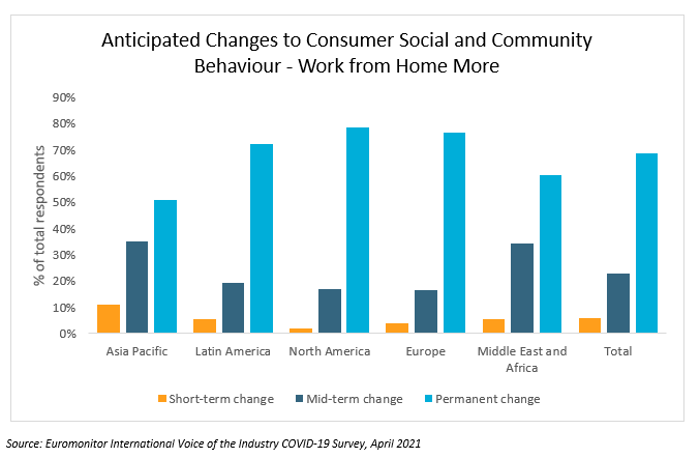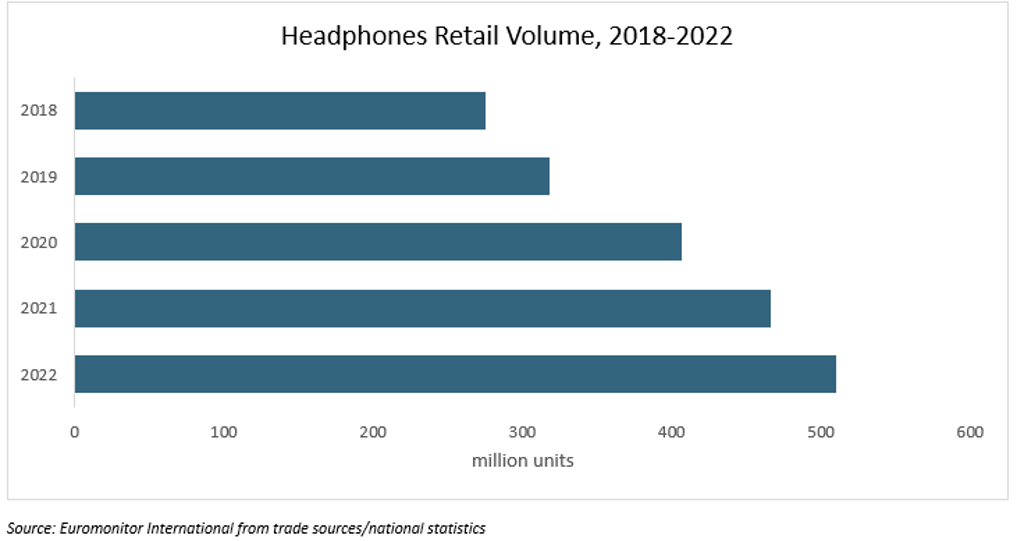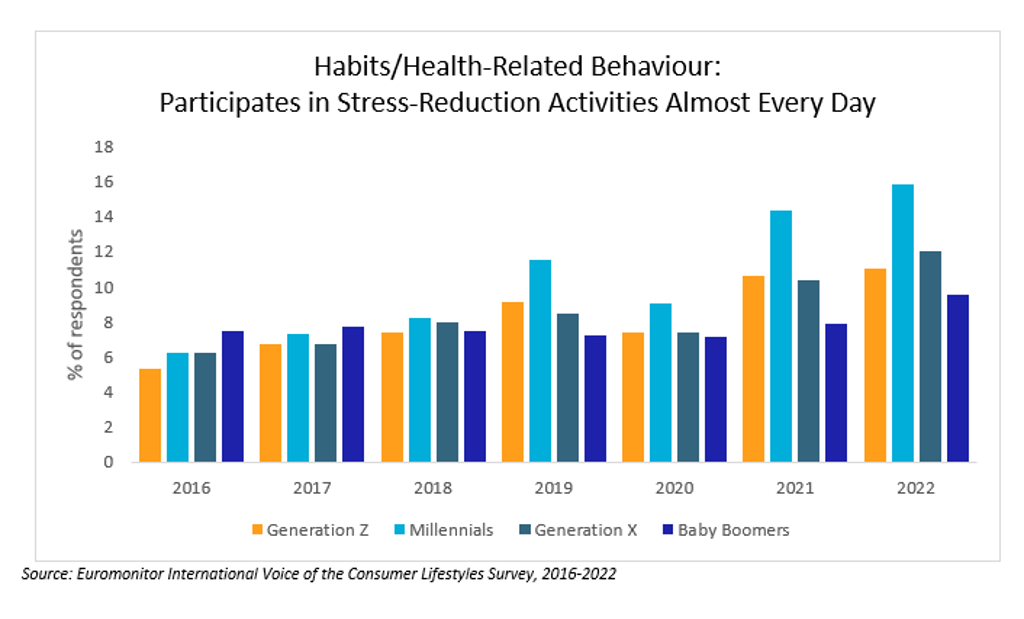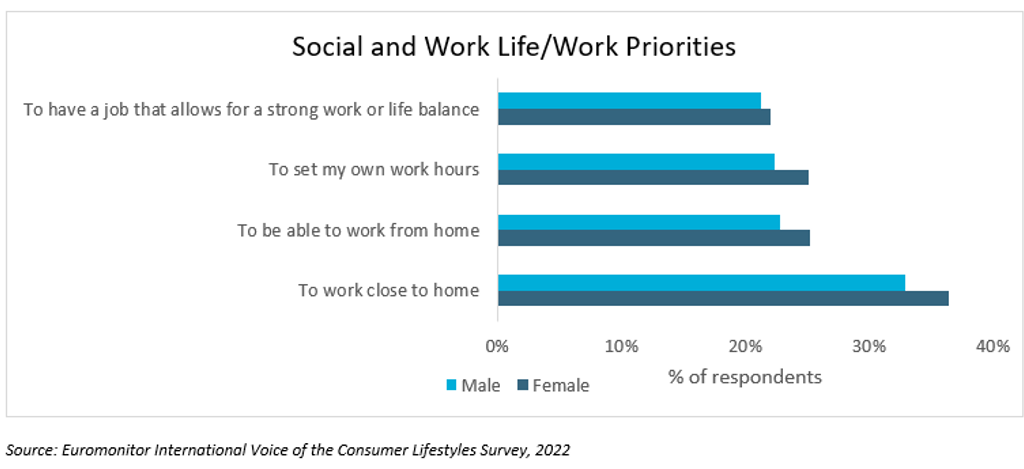According to Euromonitor International’s Voice of the Consumer Lifestyles Survey 2022, 36% of global consumers intend to work from home in the future. Similarly, companies worldwide cite working from home as the most significant long-term impact of the pandemic. While the remote working trend is usually praised for its advantages, it can be both a blessing and a burden. This article will explore the five main negative considerations to working from home.
Working from home is usually a quiet and undisturbed process. However, for some, a proper environment or a dedicated workspace is beyond their reach. For instance, living with and caring for dependents might make it difficult to find a soundproof space for conference calls, which, consequently, can strain productivity.
As a result, companies are increasingly rethinking employee benefits and including home office allowances aimed to improve the homeworking spaces. Besides advanced background solutions, which have helped to create a more professional image during video meetings, growth in sales of digital appliances related to the home office have risen. For example, headphone sales continued to grow over 2019-2021, fuelled by the rising popularity of noise-cancelling headphones.

- Blurred work-life boundaries
Avoiding the commute frees up time and improves work-life balance. Yet, for many, working from home often results in blurred work-life boundaries due to the inability to rewire from work to leisure. Working from a space that once was exclusively devoted to leisure and family frequently leads to overworking or underworking, and thus either a potential burnout or loss of productivity are often followed by increasing levels of stress. According to the Euromonitor International Voice of the Consumer Lifestyles Survey, as of 2022, generations that have the highest workforce enrolment rates, primarily millennials and Generation X, participated the most in stress reduction activities, while Generation X also reported the highest extreme stress levels.

- Mental and physical health
Human beings by nature are social creatures and need stimulation. Therefore, remote working might lead to feelings of isolation and loneliness, especially among employees that live alone. Along with adverse negative effects on mental health, prolonged loneliness and lack of contact hinders business growth, in terms of decreasing creativity, productivity and sharing of ideas. Furthermore, through more sedentary lifestyles, remote working also affects employees’ physical health, in the form of musculoskeletal disorders and weight gain.
To address these issues, companies are launching numerous initiatives. For instance, Enterprise Nation introduced Make a Plan, an app that provides SMEs with helpful content and access to mentoring. This way, business owners are encouraged to network with other entrepreneurs, learn from their experience and receive support. Another employee engagement company, WRKIT, has launched BeneKit, a platform allowing employees to access a suite of physical, mental and financial wellbeing benefits.
- Security issues
Remote working makes digital security a pressing issue. Connecting to an unsafe network, using a personal device for job-related matters, or installing third party apps on a work computer are just some of the cybersecurity threats that jeopardise the operations of an entire organisation.
To address these issues, FERMA’s project group has developed a simplified risk management tool for remote work. A simple questionnaire helps companies recognise cybersecurity risks related to strategy, finance, security, and technology. Meanwhile, to mitigate cybersecurity risks, Google has also launched a cloud-native solution, Work Safer, which offers companies access to highly secure email, meetings, messages, documents, and other remote working essentials. The solution also includes Pixel phones that provide improved account protection, website fraud prevention, and security analytics for safety.
- Increasing gender gaps and decreasing inclusion
The pandemic has increased the gender divide, erasing some progress made on female empowerment, as due to remote work policies and containment measures, many women found themselves juggling professional and personal lives. The OECD report showed that 61.5% of mothers of children under the age of 12 years took on the majority or entirety of the extra care work, compared to less than a quarter of fathers. Taking on additional chores and childcare while dealing with professional responsibilities simultaneously also resulted in labour market penalties and stress.
Based on the Euromonitor International Lifestyles Survey in 2022, 35% of female respondents said they expect to have flexible work start and finish times in their future professional life. As a result, companies are embarking on a flexitime working model, focusing on deadlines and targets rather than full compliance with the 9-5 working arrangement. However, the full benefits of flexitime working are impossible to reap without effective communication.
For further insight and related content, see the report Global Household Trends.
